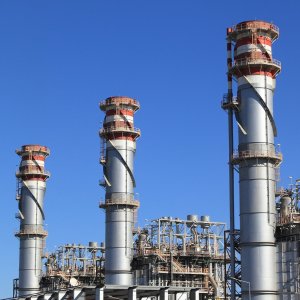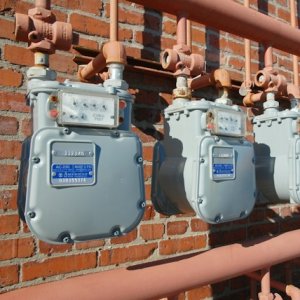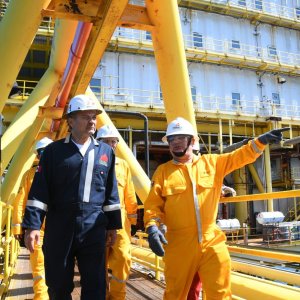Grid Modernization: A Step Toward Decarbonization

STORY INLINE POST
In Mexico and around the globe, the installation of additional renewable energy power plants is a critical part of the energy transition to reduce carbon emissions (CO2) and other pollutants. But what happens when there is technological capability but the grid capacity isn’t sufficient to dispatch all the energy that these renewable power plants can produce?
This is a worldwide issue that has become more complicated due the ongoing energy crisis. Demonstrating their concern for carbon reduction, 25 different territories worldwide participated in the index from the American Council for an Energy-Efficient Economy (ACEEE), which ranks the most significant energy users based on policy measures and performance metrics in four categories: buildings, industry, transportation, and national efforts. France, the UK, and Germany were the Top 3 countries on the International Energy Efficiency Scoreboard in 2022, while Mexico placed 14th.
In addition to the scoreboard, the ACEEE reveals essential data about the initiatives that Mexico has taken to reduce its climate impact. For example, between 2013 and 2018, the country registered a 9.5% decrease in energy intensity.
At COP27, the November 2022 conference of the parties to the United Nations Framework Convention on Climate Change, Mexico announced the strengthening of its climate commitments. By 2030, its emissions reduction goal will increase from 22% to 35%. In addition, the Sembrando Vida (Sowing Life) program — budgeted at MX$37.137 billion (US$1.9 billion) in 2023 — will seek annual mitigation of 4 million tons of CO2 by planting another 100 million trees this year. The total goal: 1.188 billion trees.
Worldwide, nations including Mexico, have pledged unyielding commitment to tackle climate change through decarbonization, reforestation promotion, and the installation of cleaner energy sources to their power matrix. However, their efforts depend on grid modernization, which is critical to making greener energy accessible, reliable, and affordable.
By using its energy resources optimally and reducing its environmental impact, Mexico can assertively navigate the challenge of grid modernization, improve its position in the energy transition, and generate business opportunities.
A Challenge for the Country
Mexico’s electrical grid is a mature and complex system. Like some locations around the USand Europe, it is no longer considered to be in a growth phase but a modernization phase. Therefore, in recent years, Mexico’s grid has been challenged by its own evolution and the centralized long-term planning that is still needed.
For instance, older energy facilities face demands above their capacities. With the increased penetration of variable generation sources as well as more extreme weather conditions, expensive and unpredictable system failures are taking place.
A key issue with renewables is their integration into the grid and the challenges associated with their variable nature. While it is important to integrate them into the grid, we must keep in mind that today's facilities were not designed to handle power generation that operates in the way that wind and solar systems do. The wind does not blow constantly, the sun does not shine permanently. Even so, our energy system must always be able to balance between supply and demand, reacting to those variations almost immediately.
The Path Toward Decarbonization
Today we are at a turning point, a time when the consumption demand for clean energy coincides with the concept of a carbon-free world, which until recently seemed utopian. Now, we see that it is possible to maintain a reliable electricity system while meeting the challenge of climate change. It is not just achievable, but also one of the major responsibilities of the entire industry and all of us involved in it.
The fastest path to decarbonization will come through a combination of renewables, thermal or conventional generation, and grid solutions that enable a pragmatic transition. The main challenge is to ensure the safety, resilience, and efficiency of the grid, which must maintain its reliability even as the share of renewable energies in the energy matrix increases. In other words, the challenge is to make renewable energy work as reliably as conventional generation sources by modernizing the existing grid.
In most countries, however, transmission grids already are — or soon will be — a bottleneck to the energy transition. One solution is grid digitalization, which increases the efficiency of the current systems, helping prevent failures, reduce costs, and create structures that can reliably accommodate greater power from different energy generation sources. That’s why grid modernization is fundamental.
For example, the implementation of technology that responds to modernization can be applied to the interconnection of wind and solar energy in existing grids. Given their variability, these cause certain distortions in the system that can be mitigated through technology, such as rotating machines, synchronous compensators, STATCOM compensation systems, and storage and digitalization of the grid’s data. There is a technical feasible solution for each grid problem.
A Better Future Is Possible
All countries face these same challenges. Some are solving them through planning, regulatory frameworks, investment incentives, or financing the costs. But what is striking is that these issues increasingly feature on the public agenda.
To achieve the objectives of this industry modernization, it is necessary to provide continuous investment in our grids to adapt to the fact that they were not originally designed for the current use, not only in software and hardware but also in new technologies and digitalization.
Thus, in the face of the growing trend of renewable energy participation in the energy matrix, a dynamic adaptation is required. All this is so that, in the long term, it will be possible to resolve the capacity and planning of the electrical grids, the adaptation of regulatory frameworks, and the introduction of new technologies to meet the world’s carbon neutral goals.








 By Ivette Castillo | General Manager GSI Grid Solutions -
Tue, 03/28/2023 - 09:00
By Ivette Castillo | General Manager GSI Grid Solutions -
Tue, 03/28/2023 - 09:00
















